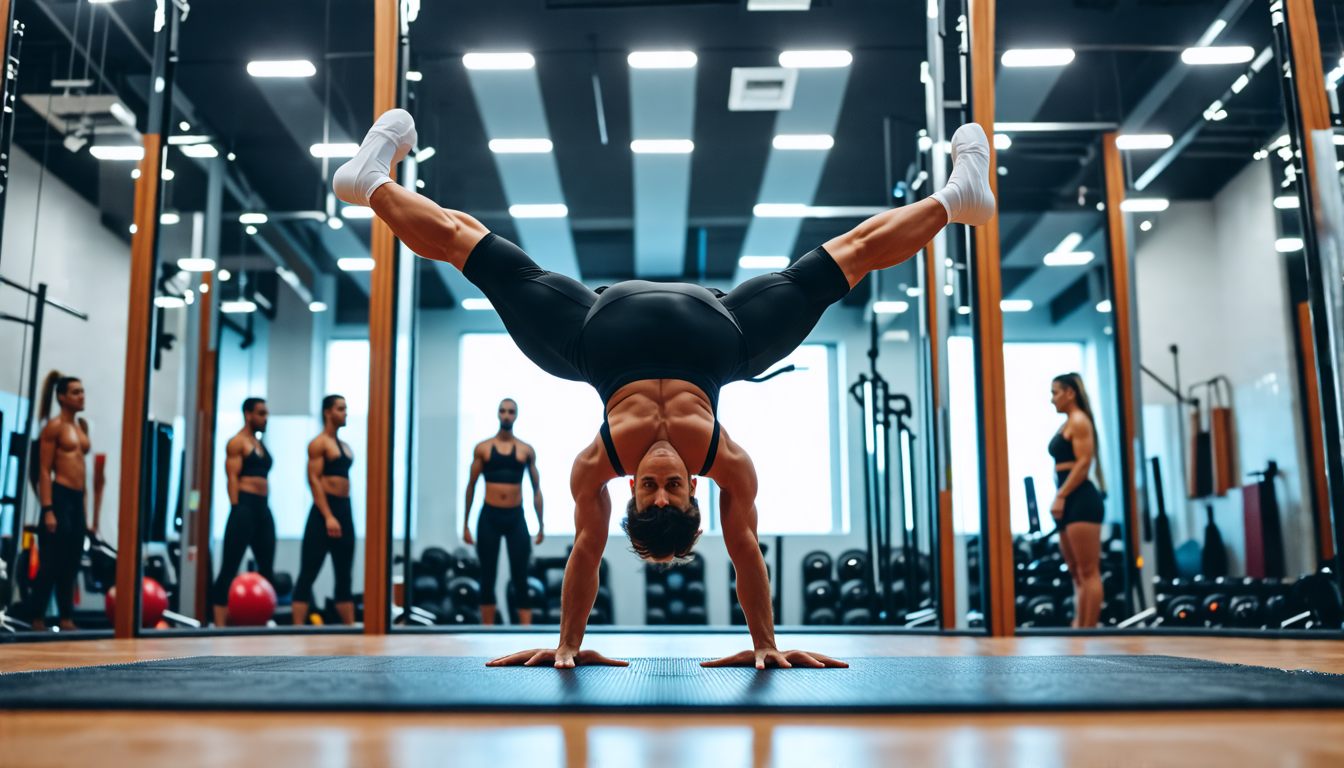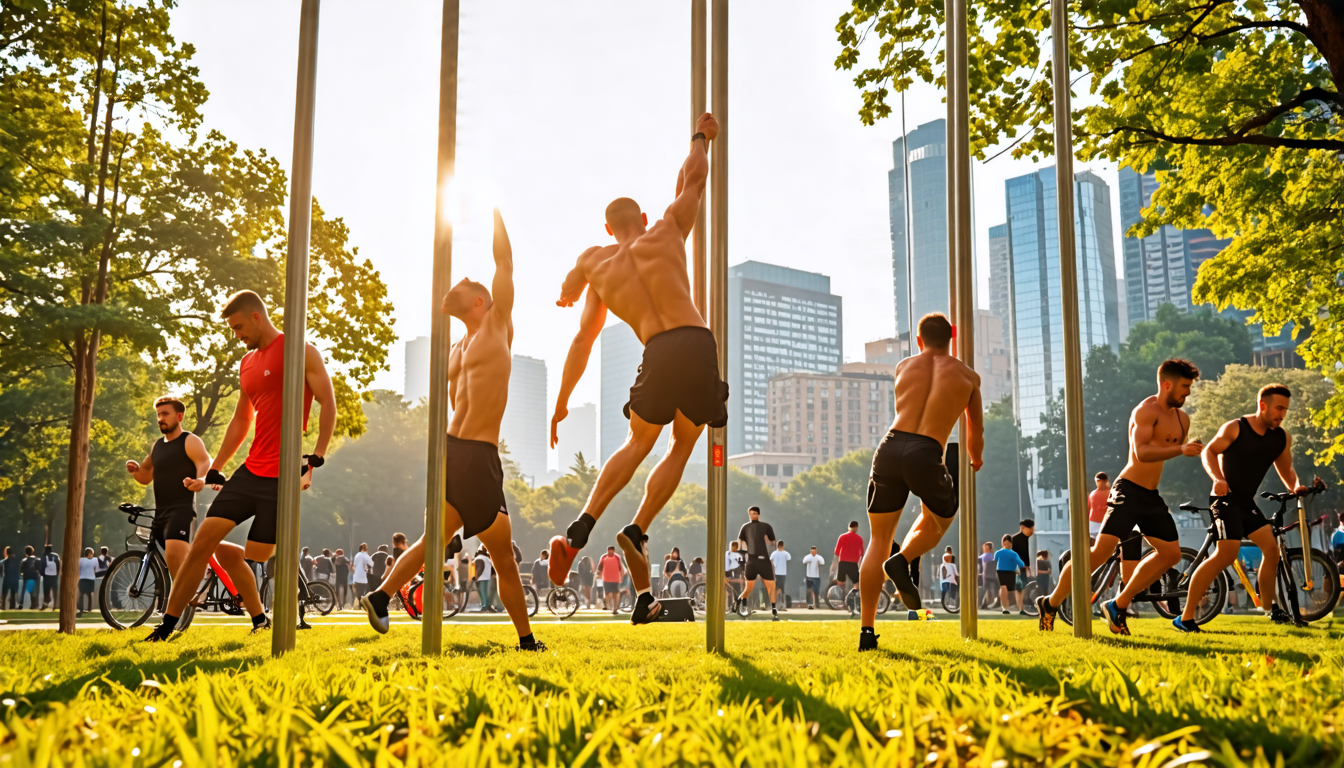Embarking on the journey to master the human flag is a remarkable feat of strength, balance, and dedication. This guide introduces you to the foundational techniques necessary for perfecting this iconic gymnastic move. As you begin, it’s crucial to focus on developing core strength, honing your grip technique, and ensuring proper positioning—key elements that form the cornerstone of the human flag. Through our step-by-step approach, you’ll discover the intricacies of these techniques, complete with detailed steps and illustrations that delineate the correct form, while offering tips on essential exercises geared towards building muscle strength and endurance. As you progress from beginner human flag techniques, such as enhancing core strength for the human flag, to mastering the basics with our step-by-step human flag tutorial, your confidence and ability will grow. Once you’ve established a solid foundation, the next phase of your journey involves exploring advanced human flag techniques. Learn about challenging variations like the straddle human flag and the one-arm human flag, as well as expert tips to help you overcome strength plateaus and refine your technique and balance. A crucial aspect of mastering advanced human flag techniques lies in recognizing and correcting common human flag mistakes. By focusing on refining your skills, you’ll avoid pitfalls that many practitioners encounter, ultimately helping you achieve the impressive feat of holding your body parallel to the ground with grace and control. Through dedication and practice, you’ll advance from the basics to executing intricate variations of the human flag with adeptness, honing not just a skill, but a testament to your physical prowess.
Mastering the Basics of the Human Flag: Step-by-Step Guide
Embarking on your journey to master the human flag requires a combination of strength, technique, and patience. At its core, the human flag is an impressive exercise showcasing immense core strength and athletic ability. By methodically building up your skills, you can achieve this iconic pose with confidence.
Importance of Core Strength
Strong core muscles are the foundation of the human flag. Without a robust core, maintaining a rigid horizontal position becomes almost impossible. Focus on exercises that enhance the strength and endurance of your abdominals, obliques, and lower back. Some effective beginner human flag techniques include planks, hanging leg raises, and hollow holds. Incorporating these exercises into your routine will significantly contribute to the overall strength necessary for holding the human flag.
Grip Technique and Proper Positioning
Your grip technique is crucial in executing the human flag successfully. It involves using different muscle groups in harmony to stabilize and maintain your body’s position. Start by practicing on a sturdy and appropriately sized pole or bar. The top arm should grip overhand, providing the primary support, while the bottom arm should grip underhand, assisting in stabilization. Ensure your body is parallel to the pole; this alignment is key to achieving and maintaining the human flag position.
Step-by-Step Human Flag Tutorial
- Begin with the Pole: Choose a pole that can support your weight and provides a comfortable gripping surface. Position yourself so that the pole is next to your body, with your feet firmly on the ground.
- Grip Setup: Place your top hand on the pole in an overhand grip above your head. Your lower hand should grip the pole with an underhand grip at hip level. This grip setup is fundamental for leveraging your strength.
- Engaging the Core: Keep your core engaged as you lift your feet off the ground. This action requires pulling with your top hand and pushing with your bottom hand against the pole.
- Align the Body: Once your feet are off the ground, aim to align your body horizontally to the pole. Balance and control are achievable through engaging your core and arms evenly.
- Hold and Lower: Attempt to hold the position for short periods initially. Gradually increase your hold time as your confidence and endurance build. Lower yourself slowly and controlled to avoid injury.
Essential Exercises to Build Muscle Strength and Endurance
Developing the physical capability to perform a human flag requires time and dedication to muscle conditioning. Here are some essential exercises:
- Planks: Regular planks and side planks are excellent for improving core stability and strength. Aim to hold each plank position for at least 60 seconds.
- Hanging Leg Raises: This exercise enhances abdominal strength, crucial for stabilizing your body in the air. Start with bent knees and gradually work your way to straight-leg raises.
- Pole Holds: Practice gripping the pole in the starting human flag position and hold for as long as possible. This builds grip strength and familiarizes your muscles with the posture.
- Horizontal Pull Regressions: Practicing horizontal pulls strengthens the back and shoulders – pivotal in lifting and holding your body during the full movement.
With dedication to these beginner human flag techniques, anyone can develop the core strength necessary to master the human flag. Remember, consistency and gradual progression are vital. By understanding grip techniques and building core strength, you are setting the groundwork to achieve one of the most impressive exercises in fitness.

The journey to mastering advanced human flag techniques involves exploring variations that test your strength, balance, and finesse. As you progress from the basics, incorporating moves such as the straddle human flag and the one-arm human flag can significantly enhance your skill set.
Advanced Human Flag Variations
The Straddle Human Flag
The straddle human flag is an advanced variation that requires more flexibility and balance. To perform this move, follow these steps:
- Begin by assuming the standard human flag position, ensuring your core is engaged and your grip is secure.
- Slowly spread your legs wide apart, forming a straddle position. This movement shifts the center of mass, demanding greater control.
- Maintain tension in your abdominal muscles and keep your shoulders stable to prevent swaying.
- Focus on smooth, controlled movements, breathing steadily as you hold the position.
Practicing the straddle can enhance your flexibility and strength, as well as improve your overall balance required for advanced human flag techniques.
The One-Arm Human Flag
The one-arm human flag is one of the most challenging variations due to the reliance on a single arm for support. Here are the key steps to execute this technique:
- Start by achieving a comfortable position in the standard human flag.
- Gradually transition the weight from your lower arm to the upper arm.
- Once balanced, release the lower arm, engaging your core intensely to maintain stability.
- Keep your body as straight as possible; visualize a solid line from your shoulders to your feet.
- Leverage your core, scapular, and shoulder endurance to hold the position for increasing durations over time.
Building toward the one-arm human flag involves consistent practice to reinforce strength, stability, and mental focus.
Overcoming Plateaus and Refining Technique
As practitioners advance, they often encounter physical and mental plateaus. Adopting a strategic approach can help overcome these barriers:
Expert Tips
- Incremental Progression: Break down each advanced technique into micro-movements, celebrating small wins to build motivation and endurance.
- Strengthen Accessory Muscles: Include exercises that target forearm, shoulder, and scapular muscles to support your human flag capabilities.
- Mindful Practice: Concentrate on the quality of each movement rather than the duration. Controlled practice enhances muscle memory and spatial awareness.
Common Human Flag Mistakes and How to Correct Them
Acknowledging and correcting common mistakes is crucial to refining your human flag skills. Some frequent errors include:
Insufficient Core Engagement
Often, practitioners neglect full core engagement, leading to sagging hips or bent knees. Strengthening exercises such as planks and hollow body holds can enhance core stability and should be integrated into your routine.
Poor Grip Technique
An inadequate grip can undermine the effort of attaining the proper hold. Focus on exercises that boost grip strength like hanging from bars, using grip trainers, and practicing the position statically to build endurance.
Misalignment of Body
Maintaining a straight body alignment is vital. Use mirrors or video recordings to self-assess and adjust any curvature. Targeted exercises like side planks can also aid in developing this alignment.
In conclusion, advancing your human flag skills requires dedication and a nuanced understanding of your body’s mechanics. Remember to consistently evaluate and adjust your technique to foster improvement.
In conclusion, mastering the human flag is a rewarding journey that not only showcases incredible strength and balance but also demands dedication and precision. By focusing on the fundamental techniques, such as developing core strength and mastering grip and positioning, beginners can lay a solid foundation for progressing to more advanced variations. Incorporating essential exercises tailored to building strength and endurance will ensure steady progress and reduce the risk of injury. As practitioners advance, experimenting with challenging techniques like the straddle human flag and one-arm variation can further enhance skills while keeping workouts dynamic and engaging. It’s crucial to remain mindful of common mistakes and to seek refinement in technique to maintain proper form. Ultimately, whether you’re a beginner or working on advanced progressions, consistent practice, and a structured approach are key to successfully mastering the human flag.

